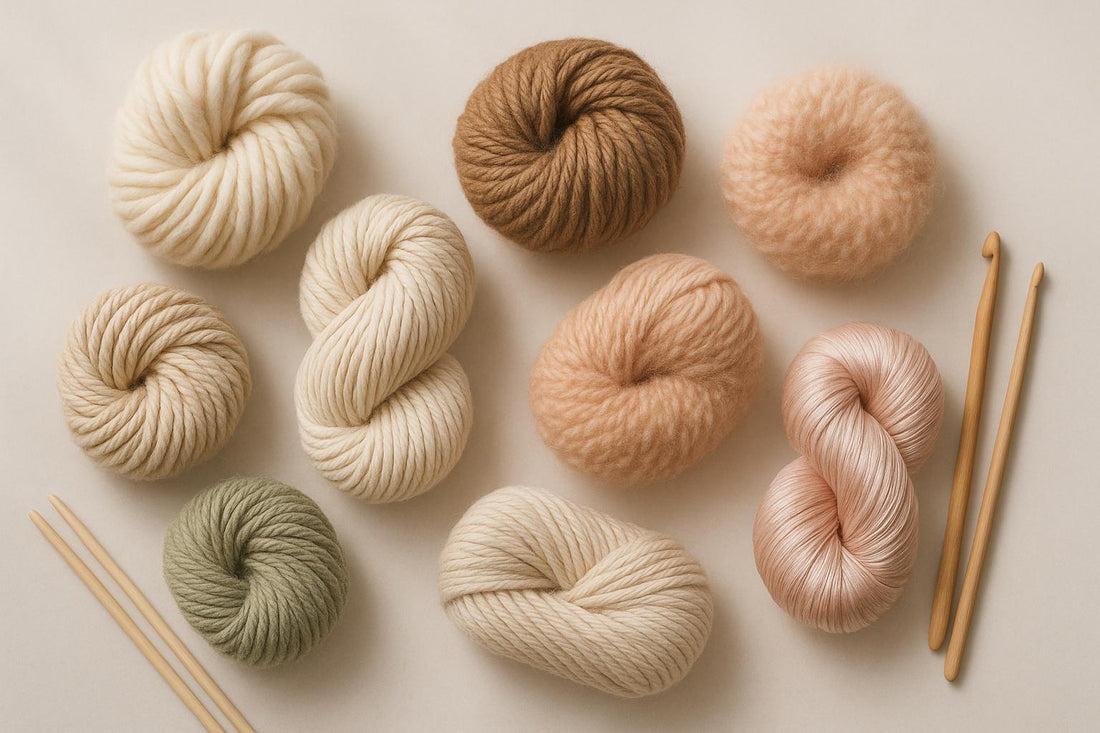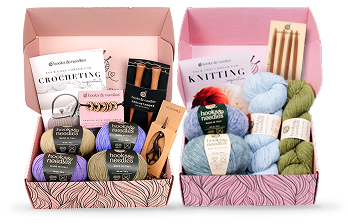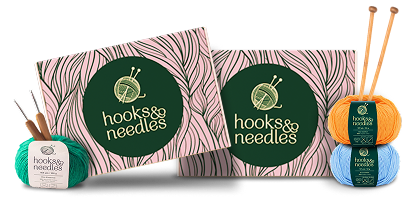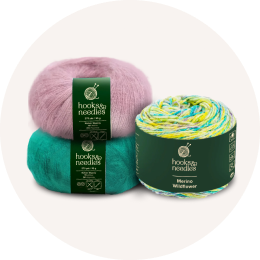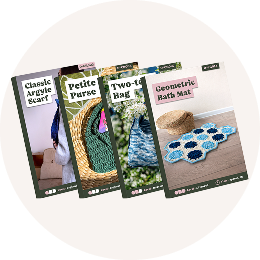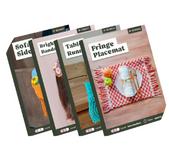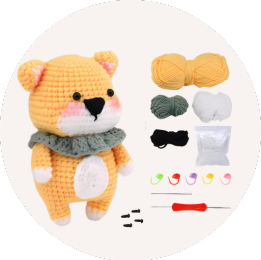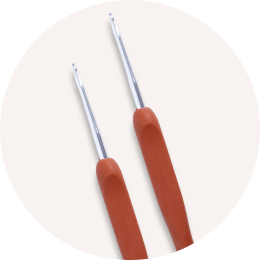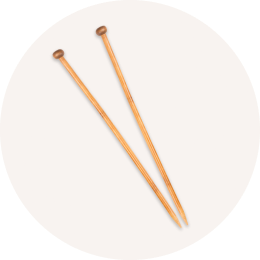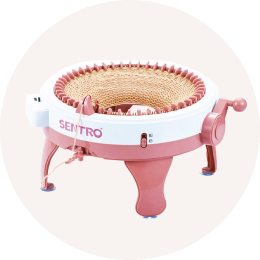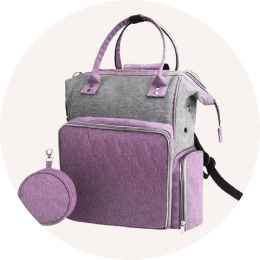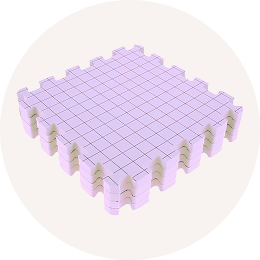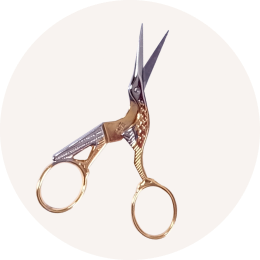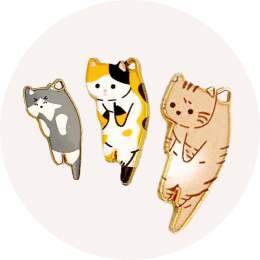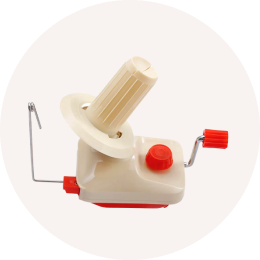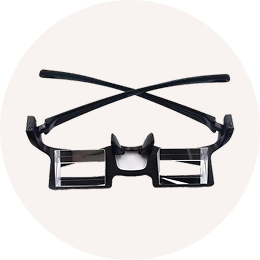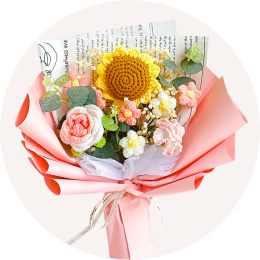Yarn texture is just as important as color or fiber when crafting. It impacts appearance, feel, and functionality. Smooth yarns highlight stitch definition, fluffy textures add warmth, and bumpy yarns offer dimension. To choose the right texture:
- Match the texture to your project: Smooth yarns suit detailed patterns; fluffy yarns are better for cozy scarves or blankets.
- Consider feel and function: Soft yarns work for baby items, while durable yarns are ideal for high-use pieces.
- Account for seasons: Lightweight yarns are great for summer, and fluffy ones provide warmth in winter.
Testing yarn with a swatch ensures it fits your project. Hooks & Needles offers curated yarn options for all skill levels, making it easier to find the perfect match for your needs.
Learn About Different Yarn Textures - Yarn for Crochet Part 5
Yarn Texture Basics
Getting a handle on yarn texture starts with understanding the different types available and what sets them apart. Texture plays a big role in how your finished piece will feel, drape, and function. Here's a breakdown of some key texture categories to help you choose wisely.
Common Yarn Texture Types
Smooth yarns have a uniform surface with little to no variation. Think of mercerized cotton or superwash wool - they offer a silky, polished feel that makes every stitch pop. These are great for projects where crisp stitch definition and clean lines are a priority.
Fluffy textures bring a cozy, soft quality to your work. Mohair is known for its distinctive halo, alpaca feels like wrapping yourself in a cloud, and angora offers unmatched softness, though it requires gentle care.
Bumpy textures add character and dimension. Bouclé, with its irregular loops, creates a nubby, textured surface, while slub yarn features uneven thicknesses, giving it a rustic, handspun vibe.
Velvety textures exude luxury. Chenille’s short, dense fibers produce a velvet-like finish, while velvet yarn goes even further with a denser pile that’s irresistibly soft.
Novelty textures break the mold with their unique structures. Ribbon yarn creates flat, tape-like stitches, faux fur yarn mimics the look and feel of real fur, and metallic yarns add a touch of sparkle to your project.
What Creates Different Textures
Several factors work together to define a yarn's texture:
- Fiber type: Wool’s natural scales lend grip and warmth, cotton’s smooth plant fibers offer a cooler feel, and acrylic can replicate a range of textures, from sleek to slightly fuzzy.
- Ply structure: Single-ply yarns tend to feel softer and more relaxed, while multi-ply yarns are smoother and provide better stitch definition due to their twisted construction.
- Spinning methods: Woolen spinning creates light, airy yarns, while worsted spinning produces a smoother, more consistent texture.
- Manufacturing treatments: Techniques like brushing can make yarns fuzzier, mercerization gives cotton a shiny, polished look, and heat-setting helps synthetic fibers hold their shape after washing.
All these elements combine to shape the texture and performance of your yarn, influencing how it interacts with your fabric.
How Texture Changes Your Fabric
The texture of your yarn can dramatically alter the look and feel of your finished piece:
- Stitch clarity: Smooth yarns make intricate patterns stand out, while textured yarns soften details and bring depth to simpler designs.
- Drape: Smooth yarns offer structure and defined shapes, while fluffy textures create softer, more flowing lines - perfect for scarves or shawls.
- Density: Smooth yarns pack tightly, resulting in durable, weather-resistant fabrics. In contrast, fluffy yarns trap air, making lighter, warmer fabrics ideal for insulation.
- Feel: Velvety chenille is cozy and perfect for cooler seasons, while smooth cotton delivers a breathable, lightweight finish for summer projects.
How to Pick the Right Yarn Texture
Choosing the right yarn texture is about more than just aesthetics - it's about aligning the yarn’s characteristics with your project’s purpose. The right match ensures your finished piece not only looks great but also functions as intended.
Match Texture to Your Project
Every project has unique needs, and the texture of the yarn you choose can make all the difference. For garments, the texture should complement the design and feel comfortable against the skin. Smooth yarns are ideal for intricate patterns because they bring out stitch definition, ensuring your hard work doesn’t go unnoticed.
Accessories, on the other hand, allow for more experimentation. Scarves and shawls, for example, shine with soft, fluffy yarns like mohair or alpaca, which feel luxurious and drape beautifully. Hats benefit from smoother textures that provide structure while remaining cozy.
For home décor, you can go bold with texture. Throw pillows look great with textured yarns like bouclé or chenille, adding visual interest to your space. Functional blankets should prioritize softness, while decorative throws can handle more dramatic textures.
When it comes to baby items, prioritize softness above all else. Baby skin is incredibly sensitive, so stick to the smoothest, gentlest yarns. Avoid anything rough or with loose fibers that might irritate delicate skin.
Once you’ve matched the texture to your project, it’s time to think about how it feels and functions in the long run.
Think About Feel and Function
The texture of your yarn directly affects how your finished piece will feel, how durable it will be, and how easy it is to care for. For example, a winter sweater should provide warmth and comfort, making fluffy yarns like mohair or alpaca a great choice - they trap air for insulation. A summer top, however, needs to be breathable and cool, which makes smooth cotton or linen blends a better option.
Durability is another factor. High-use items like blankets or everyday garments benefit from smooth, tightly twisted yarns that hold up to wear and tear. Fluffier yarns, while cozy, often require more delicate care, such as hand washing or special detergents. Smooth synthetic blends are typically more forgiving and can handle machine washing and drying with ease.
Drape and structure also hinge on texture. Smooth yarns give stability to structured projects like cardigans or fitted tops, while fluffy yarns add movement and softness to flowing pieces like scarves or loose-fitting garments.
The functional aspects of yarn texture should always align with the practical demands of your project.
Weather and Season Factors
Climate plays a big role in choosing the right yarn texture, especially in the varied conditions across the U.S. For summer projects in hot regions where temperatures soar to 85-95°F, smooth yarns like cotton, linen, or cotton blends are ideal. They’re breathable and won’t trap heat, keeping you comfortable in humid weather.
For winter accessories, especially in areas where temperatures dip below 32°F, fluffy yarns like wool or alpaca are perfect. Their insulating properties trap warm air, keeping you cozy even in the coldest conditions. Wool’s natural crimp enhances its ability to retain heat, making it a top choice for winter wear.
During spring and fall, when temperatures fluctuate between 45-70°F, medium-weight smooth yarns strike the right balance. They provide warmth without being too heavy and work well for layering, which is key during unpredictable weather.
Humidity is another factor to consider. In dry climates like the Southwest, textured yarns may feel more comfortable as they don’t cling to the skin. In humid areas like the Gulf Coast, smooth yarns help prevent that sticky, uncomfortable sensation caused by moisture in the air.
Finally, don’t overlook indoor heating and cooling. Strong air conditioning in summer may require slightly warmer yarns, while well-heated homes in winter might make ultra-fluffy textures feel too warm for indoor use. Keep these factors in mind to ensure your project suits both outdoor and indoor environments.
Yarn Texture Guide for Popular Projects
Choosing the right yarn texture becomes much simpler when you understand how different textures perform for various projects. Knowing the benefits and challenges of each texture can help you match your yarn to your project's goals.
Texture Pros and Cons Chart
| Texture Type | Best For | Pros | Cons |
|---|---|---|---|
| Smooth | Sweaters, fitted garments, intricate patterns | Great stitch definition, machine washable, durable, highlights cables and lace | Can feel less cozy, emphasizes tension issues, limited warmth without bulk |
| Fluffy | Scarves, winter hats, cozy blankets | Excellent warmth, luxurious feel, hides minor mistakes, drapes well | Obscures stitch patterns, requires gentle care, can shed, harder to see stitches while working |
| Bumpy/Textured | Throw pillows, decorative blankets, casual sweaters | Adds visual interest, hides imperfections, provides unique character | Hard to see individual stitches, challenging for beginners, may not drape well |
| Novelty | Accent pieces, children's items, decorative accessories | Eye-catching, fun to use, creates conversation pieces | Limited versatility, can be tricky to work with, may not age well, often needs special care |
This chart highlights each texture's strengths and limitations. For example, smooth yarns are perfect for technical projects like intricate sweaters, where precision is key. However, any mistakes - like a dropped stitch - will stand out. On the other hand, a fluffy yarn like mohair can hide minor errors, making it ideal for cozy scarves or blankets.
Fluffy textures are unmatched for warmth and comfort, making them perfect for winter accessories. Alpaca yarn, for instance, is lightweight yet insulating, but its delicate fibers often require hand washing - something to consider if convenience is a priority.
Textured yarns such as bouclé or chenille bring a decorative flair to home projects like throw pillows or blankets. These yarns add dimension and character but can make complex stitch patterns harder to follow. They’re better suited for simpler designs where visual impact takes center stage.
How to Use the Chart
This chart serves as a quick reference to match yarn textures with your project's needs. Start by identifying the purpose of your project and then choose the texture that aligns best:
- For a baby blanket, smooth, soft yarns that can handle frequent washing are ideal.
- For winter accessories, prioritize warmth. A mohair-blend scarf offers excellent insulation but requires delicate care.
- For decorative items, focus on visual appeal. Textured or novelty yarns can elevate even simple patterns into something striking.
Beginners often benefit from smooth yarns, as they provide clear stitch definition, making it easier to learn proper tension and techniques. Meanwhile, more experienced crafters might enjoy the challenge of working with novelty yarns for their unique effects.
When choosing yarn, think about your lifestyle needs. If you prefer low-maintenance pieces, smooth synthetic blends or treated wools are great options. If you’re willing to put in extra care for special items, fluffy natural fibers might be worth the effort.
Finally, consider seasonal factors. For colder climates, fluffy and insulating yarns excel, while smoother textures may be better suited for lightweight, year-round garments.
Use this guide as a starting point, but don’t forget to factor in your personal preferences. Some people love the creative challenge of working with novelty yarns, while others prefer the simplicity and predictability of smooth textures. Ultimately, the best choice is the one that fits both your project and your crafting style.
sbb-itb-f7119e8
How to Test and Choose Yarn Texture
Once you understand the basics of yarn texture, it's time to test it to ensure it works for your project's feel and purpose. Here's how you can evaluate yarn texture effectively.
Touch Tests
Start by running your fingers over the yarn. Is it soft and smooth, or does it feel rough and scratchy? For example, coarse wool or linen tends to feel much harsher compared to fine merino or lyocell fibers.
Next, hold a small 2-inch length of the yarn horizontally to assess its stiffness and drape. Yarns like rayon, synthetic fibers, or silk will often hang loosely, while cotton and stiffer fibers like linen or hemp hold their shape better.
For a deeper evaluation, give the skein a gentle squeeze. With silk yarns, you might notice a slightly "squeaky" texture or even hear a faint sound as you handle it. As you feel along the yarn, check for consistent thickness and make sure there are no unexpected bumps or lumps.
Finally, test the yarn against your skin to ensure it feels comfortable and won’t cause irritation during wear.
Check for Allergies and Skin Sensitivity
To see if the yarn might trigger any skin issues, try the "itch test." Place a small swatch against sensitive areas like your neck, cheek, or wrist. This quick test can help you identify any potential irritation before committing to the yarn.
Premium Yarn Textures from Hooks & Needles
Hooks & Needles offers an impressive range of yarn textures, crafted to meet the needs of every knitter and crocheter. Known for their high-quality supplies, the brand specializes in European yarns, ensuring each project - whether a delicate lace scarf or a cozy winter hat - turns out just as you envisioned. From subscription boxes to exclusive collections, Hooks & Needles has something for every skill level.
Monthly Subscription Boxes
Imagine having a curated selection of yarns and patterns delivered right to your door every month. That’s exactly what Hooks & Needles’ subscription boxes offer. Each box includes hand-selected yarns, digital patterns tailored to highlight their unique textures, and a few surprises to spark your creativity. It’s an effortless way to explore new materials and techniques without leaving home.
Exclusive Yarn Collections
Hooks & Needles’ yarn collections are all about quality and creativity. Each collection comes with digital patterns designed to bring out the best in the textures, ensuring your projects are as stunning as they are enjoyable to create. These carefully assembled collections cater to a wide range of creative needs, making it easy to find the perfect match for your next masterpiece.
Perfect for Every Skill Level
Whether you’re just picking up a hook or needle for the first time or you’ve been crafting for years, Hooks & Needles makes choosing the right yarn texture simple. Beginners will appreciate yarns that are easy to work with yet still produce beautiful results, while seasoned crafters can dive into more intricate textures that challenge their skills and inspire new techniques. Plus, with access to a supportive crafting community and expertly matched patterns, you’ll have everything you need to grow your skills and expand your creative horizons. Every option from Hooks & Needles is designed to deliver the quality and inspiration you need for your projects.
Conclusion: Pick the Right Yarn Texture
Choosing the right yarn texture can make or break your project. It’s not just about looks - texture affects how your piece feels, functions, and performs over time. Factors like fiber type, weight, and twist all come together to shape how your yarn behaves, and a simple swatch can often reveal whether you’ve made the right call.
For intricate stitch patterns, smooth and tightly twisted yarns help highlight the details. On the other hand, highly textured yarns might blur complex patterns but can bring depth and a tactile charm to simpler designs.
Matching the yarn texture to your project is crucial. A delicate lace shawl demands a completely different yarn than a cozy, chunky sweater. Understanding these needs before you start can save you from unnecessary frustration and ensure your finished piece turns out just right.
Always take the time to test your yarn with a swatch. This small step can confirm how the yarn will behave in your project and give you confidence in your choice.
At Hooks & Needles, you’ll find premium yarns and expert guidance to bring your creative visions to life. Whether you’re exploring their subscription boxes or browsing exclusive collections, you’ll discover textures that align perfectly with your project and skill level.
Choose wisely, and let your work shine with the perfect texture.
FAQs
What’s the best way to choose a yarn texture that’s both soft and durable?
When choosing a yarn that’s soft yet tough enough to handle regular use, pay attention to the fiber blend and how the yarn is constructed. Wool stands out as a solid option - it’s naturally sturdy, retains its softness over time, and works beautifully for everyday pieces like sweaters and blankets. If you’re looking for something even easier to maintain and more hard-wearing, wool-acrylic blends are a smart pick. These blends combine the cozy feel of wool with added strength, making them ideal for items like scarves or hats that see a lot of use.
How can I test a yarn’s texture before starting a big project?
To get a feel for a yarn’s texture, start by working up a small swatch using your chosen stitch pattern. Knit or crochet a few rows, bind off loosely, and block the swatch just as you would for the final project. This process helps you see how the yarn behaves and feels in action.
Take a close look at the stitch definition under good lighting, and gently stretch the swatch to check if it maintains its shape. For added insight, wash the swatch to see if the texture changes after laundering. These quick tests can help you decide if the yarn is the right choice for your project.
How do seasons and climate influence the best yarn texture for clothing projects?
The time of year heavily influences the type of yarn you should pick for your clothing projects. For those warm summer days, lightweight and breathable options like cotton or linen are excellent. These materials allow air to flow, helping you stay cool. Wool and silk can also be surprising contenders, as they naturally adjust to temperature changes, offering comfort without overheating.
When the temperature drops, it's time to switch to chunkier, heat-retaining yarns like wool or acrylic. These provide the insulation you need to stay warm and snug. Always consider the weight and texture of the yarn to ensure your garment feels right for the season and keeps you comfortable.
